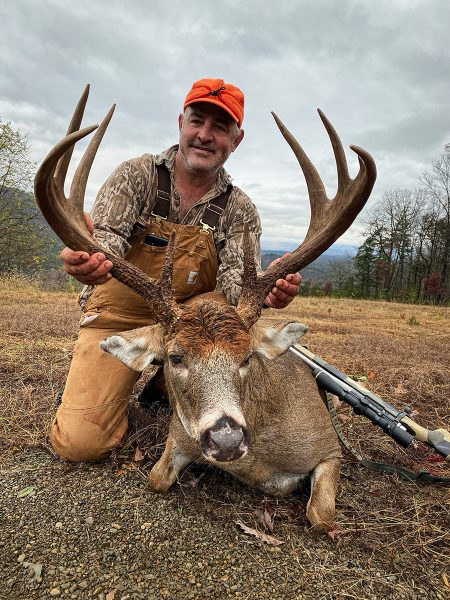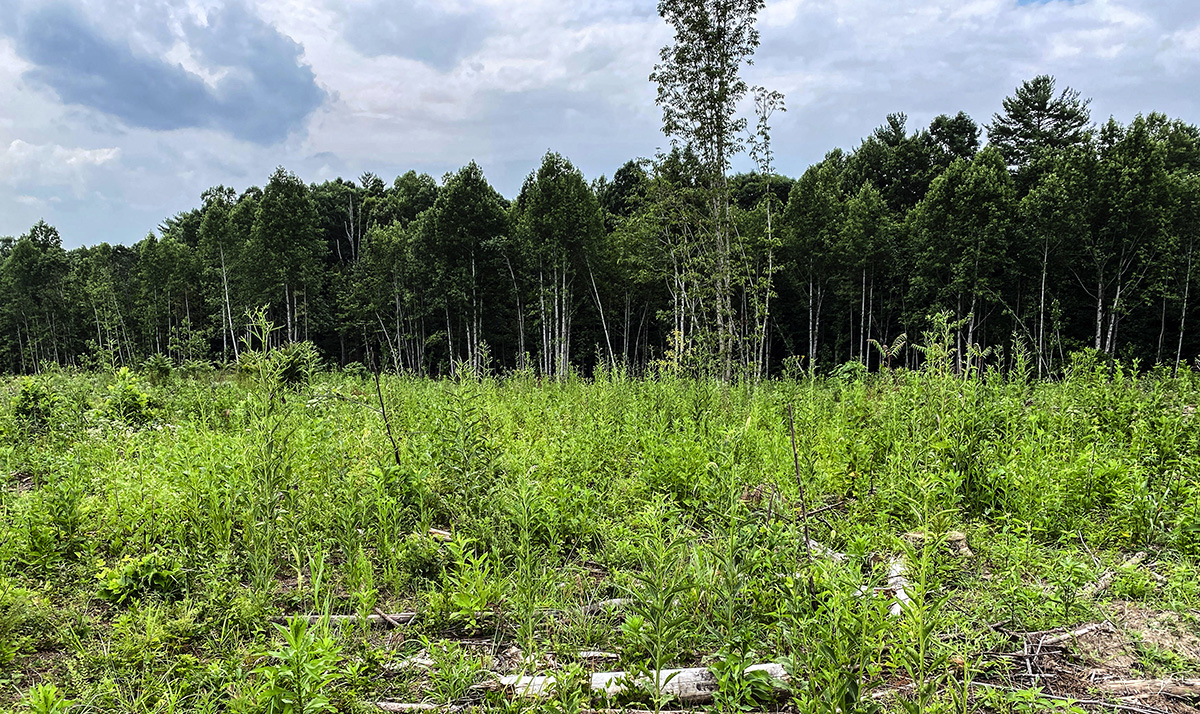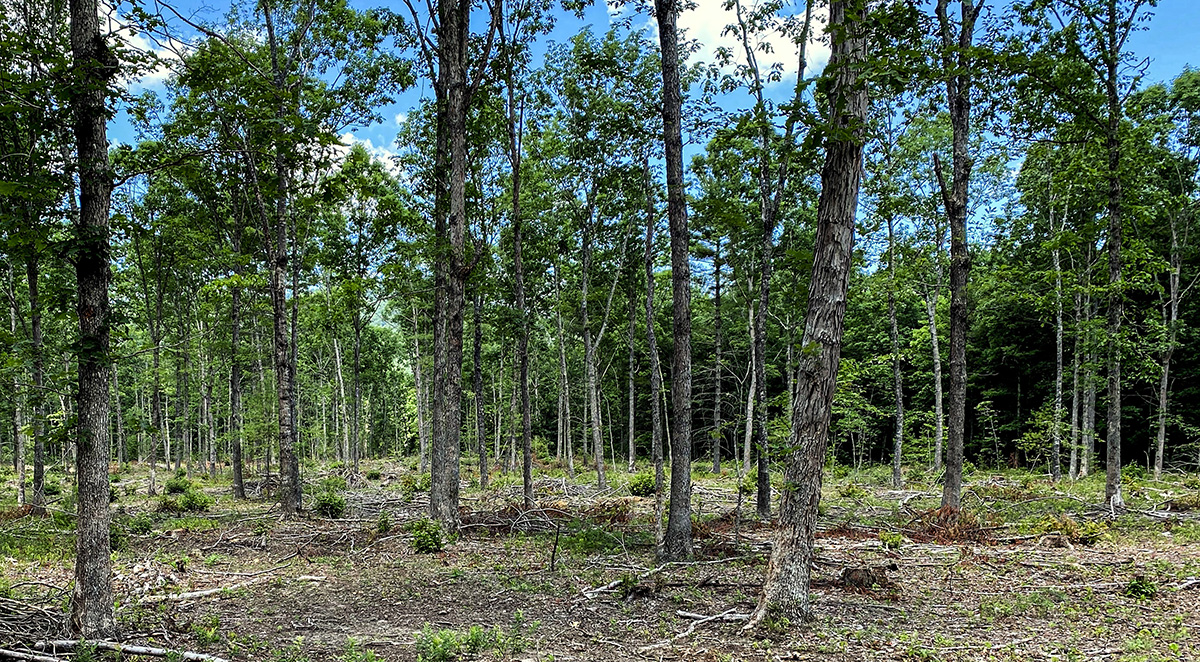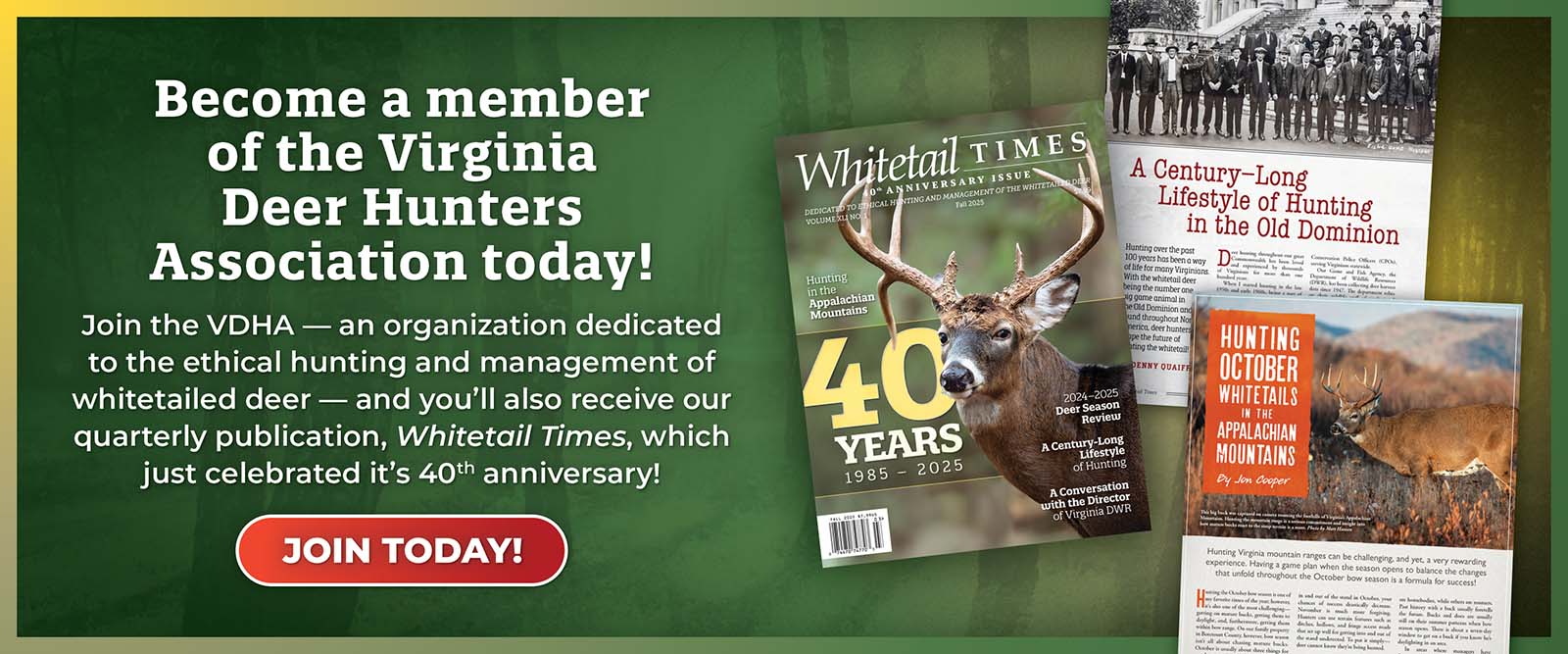By Jon Cooper for Whitetail Times
“How do you eat an elephant? One bite at a time.”
That phrase has proven true time and time again as my family manages our 10,000-acre Botetourt County property. For us, habitat management is a way of life. It’s the long play, not an instant results game. Trial and error and frustrations are sure to happen, but managers will also find successes along the way. Moreover, those successes are extremely rewarding and fulfilling.
This is a 30,000-foot view of how we manage our property, which is located in a heavily forested, poor-soiled tract in the Appalachian Mountains. My uncle, Jerry Fraley, bought the land in the late 1980s, and his vision was for it to become a family recreational paradise—a place we could work on and be proud of, as well as create memories and feed our families. It’s also a legacy he will leave behind to his family. It’s an awesome and weighty responsibility to protect it and improve upon the foundation that has already been laid, but it’s one that I feel passionately about.
Clear goals and objectives are important for anything that’s worth doing right. For us, it’s simple. We want to maximize the landscape for all wildlife, with target species being our two greatest renewable resources: deer and turkey. We’ve been very fortunate to grow, hold and harvest several good Virginia bucks. We have a multi-pronged strategy for management.
Be Committed to Passing Young Bucks and Harvesting Does

One of the Virginia bucks harvested in recent years on the Cooper family property.
We want to manage for increased age structure with maximum rack and body sizes. Who doesn’t? Trigger finger management is one thing that all hunters have the ability to control. A harvested 3-year-old buck will never get any older or bigger. A commitment to passing 2- and 3-year-old bucks is necessary if properties want to produce older age class deer. It’s not easy, and it’s not everyone’s goal. That’s okay, but it’s our goal. Due to the acreage, we have the ability to pass bucks and know they likely won’t get harvested by a hunter. Smaller properties can create co-ops with goal-oriented neighbors to put together bigger blocks of managed land, too.
Like passing younger bucks, a commitment to harvesting does is also important. Research suggests harvesting a doe for every 100 acres is a minimum requirement. I’d estimate our doe-to-buck ratio is around 3:1, which is less than optimal. That’s based primarily on observations. Remember, deer are born near a 1:1 sex ratio, and close to half of the fawns observed are bucks, so the ratio is likely never nearly as uneven as one thinks it is. As Dr. Craig Harper of the University of Tennessee suggests, “Managers should determine the doe harvest based on the body condition of the deer and the condition of the habitat.” Shooting does in areas where over-browsing occurs is a good rule of thumb and one that we adhere to.
Manage Sunlight by Managing Timber
We manage hardwood stands to create a healthy ecosystem that maximizes wildlife benefits while also providing income. That sounds great, but how is it accomplished?
We have mapped out through Google Earth (this can also be done on other programs such as OnX or HuntStand) different 15- to 30-acre hardwood stands and given them a task and responsibility in our management plan. Look at your dirt like it’s a team and you are the coach. Every designated stand on your property is a player, and that player has to perform a role in order for the team to win and for your property to maximize its goals.
The biggest limiting factor we have on our property is sunlight. Our region is dominated by mature, closed-canopy, hardwood forests. What’s aesthetically pleasing to the human eye may be a desert to a deer or other species. There’s little to no food. There’s no bedding, fawning or nesting cover. There’s just no vertical structure, and the carrying capacity for deer is low. Yes, acorns will fall every two to five years, but managing wildlife on acorn production alone isn’t a good plan due to the inconsistency of production. Acorns should be viewed as a bonus. So, in order for a mature hardwood forest to be more productive for deer, a disturbance has to occur. Our disturbance is harvesting timber.

A 10-acre planted production pine stand was recently clearcut, and early successional habitat likely created more than 1,700 pounds of deer forage and cover per acre in one growing season.
We mange sunlight by managing our timber. We have a variety of silvicultural harvests (regenerating clearcuts), 30 percent canopy reduction, and 50 percent or greater canopy reduction. Again, these hardwood stands are the players, and we manage them according to their task or responsibility we assigned to them. As agreed upon with the logger, we keep the trees with the most developed crowns in thinned hardwood stands. We also keep a variety of different species in the unit. We want as much diversity as possible. That applies to the type of harvest and the types of species left in the stand. If loggers aren’t available in your area, fire up the chainsaw. You can accomplish the same goals with sweat equity.

This was a closed-canopy forest just two months prior, and was thinned with the goal of reaching 50 percent canopy reduction. The author and logger agreed to keep the trees with the most developed crowns. Over time, these crowns will continue to expand and produce more acorns, and the understory will be burned with low-intensity prescribed fire.
Increased sunlight on the ground produces a vertical structure of native vegetation that consists of forbs, grasses and regenerating hardwoods. Woody browse is also very available during winter months.
After about eight years, clearcuts become less applicable for deer. The forage is out of reach, and the canopy is primarily closed. It’s now a young forest. If managers want to keep stands productive for deer, another disturbance should occur. We use prescribed fire. More on that later.
Old Field Management
In open areas where food plots aren’t planted, we want to manage for early successional habitat. In most cases, early succession is the first two years’ growth of forbs and grasses after a disturbance occurs. Spraying perennial cool-season grasses, such as fescue, is necessary in old fields, and we continue to eradicate fescue. “Weeds” native to our landscape such as common ragweed, pokeweed, and goldenrod, among many others, are all selectively browsed by deer. Old field structure and vegetation can be maintained or improved through a combination of prescribed fire, herbicide or disking.
Prescribed Fire
Before I go any further, it’s important to get educated on fire. I am a Certified Burn Manager in Virginia and would encourage every manager to take the Prescribed Burn Manager course.
The Virginia Department of Forestry does a great job with the program. You can obtain more information on their website: dof.virginia.gov.
Fire is the greatest tool a wildlife manager has at his or her disposal. It is the ultimate reset button. We use fire in several types of stands: old fields, thinned hardwoods, and clearcuts.
Sunlight and fire create a beautiful collision for wildlife. Take a thinned hardwood stand where 30 to 50 percent sunlight is hitting the ground. All at once, a low-intensity fire removes the leaf litter and ground thatch, stimulates the native seed bank, and top kills woody saplings. This combination creates a vertical structure that provides bedding cover, fawning and nesting cover, and native vegetation that deer forage on.

The understory of this thinned hardwood stand is maintained with low-intensity fire. University of Tennessee research has shown that removing just 30 percent of tree canopy results in 750 pounds per acre of high-quality forage. Removing 50 percent increases up to 1,200 pounds per acre. Compare that to a mature forest with only 120 pounds per acre.
As a general rule of thumb, we will maintain the following areas using fire. Timing and frequency of fire depends on the stand, and it varies from site to site.
- Bedding areas: A thick and gnarly woody structure that should be burned in the dormant season on a five- to seven-year interval for continued composition. Fire top kills trees and resets the vegetation for another five to seven years.
- Summer foraging areas and early succession: Scattered native grasses and forbs that should be burned on a one- to three-year interval, rotating between dormant season and growing season fire for continued and improved composition.
- Combination of cover and forage: Areas with grasses, forbs, shrubs and trees should be burned on a three- to five-year interval with growing season and dormant season fire.
Prescribed fire commands a lot of respect. It’s intimidating to get started, but once managers use it, get used to it, and see the benefits of it, it’s a game-changer.
Food Plots
We’re well over 1,300 words into this piece, and there’s been no mention of food plots. Are you surprised? For us, food plots provide attractant and an added bonus for deer. We can’t manage our herd economically with just food plots. In most cases, it costs us more than $300 per acre to provide high-quality forage. Aside from clover, the first thing that greens up on any property is the native vegetation. The foundation for antler growth is laid in March, April, and May. Growing season food plots aren’t creating ample forage until late spring and early summer, and, while very beneficial for deer, they essentially miss the first few months of antler growth. That’s why it’s important for every property, not just ours, to provide a solid foundation of native vegetation that greens up during the first crucial months of the antler-growing season.

Fescue was sprayed and prescribed fire was performed in late July. The result was a beautiful stand of native partridge pea that had remained dormant for many years. Partridge pea is one of the best native forbs for wildlife.
Food plots certainly have their place and can be very beneficial. We primarily use a fall attractant in our food plots to help keep does in the area for the rut. We’ve planted awnless winter wheat, dwarf essex rape, and crimson clover. Other species we’ve had success with are grain sorghum (milo) and perennial white clover.
Every property is different, and every landowner and manager has different goals and objectives. If a wildlife manager can provide everything a deer needs on approximately every 100-acre block of the property—bedding, native forage, water, and food plots—while increasing the access and huntability, he or she is maximizing their property for deer. We are committed to working toward this goal.
Special thanks to private lands biologist Andy Rosenberger (NRCS), Virginia Department of Forestry, Dr. Craig Harper of the University of Tennessee and Adam Keith and Matt Dye of Land & Legacy for equipping landowners with the resources needed to accomplish wildlife goals.
Jon Cooper manages his family’s 10,000-acre recreational property in Botetourt County and has a passion for habitat management. Jon is a life member of the Virginia Deer Hunters Association and the NRA.
©Virginia Deer Hunters Association. For attribution information and reprint rights, contact Denny Quaiff, Executive Director, VDHA.


